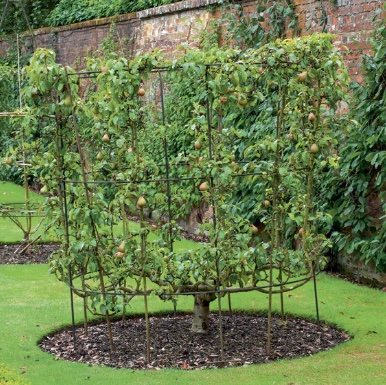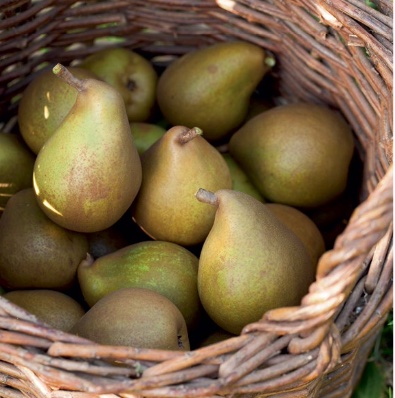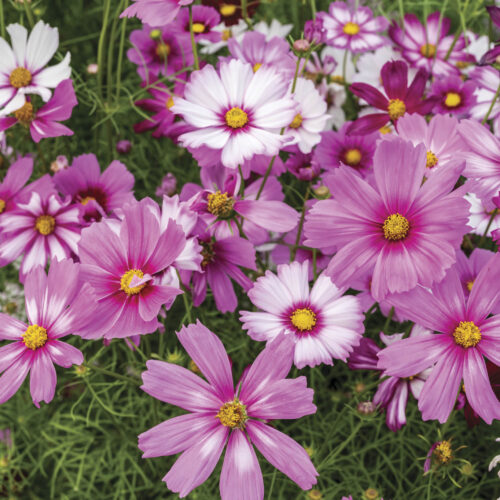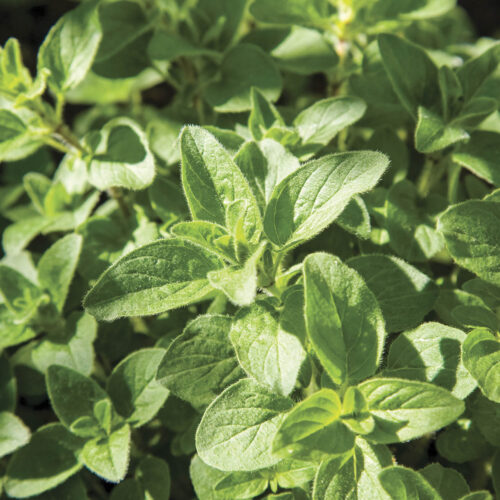Pears: cool season fruit to grow in your backyard
2019-06-15T01:38:24+10:00
Fresh is best when it comes to pears as they are a very fragile fruit. Here's the many reasons for growing your own tree, including their ability to thrive and grow fruit in a variety of climates.
We’ve all heard the saying the “belle of the ball” so I’m here to announce that the belle of cool-season fruits is the pear. For a whole slew of reasons, her close cousin the apple seems to get all the seasonal attention – the majority of space on the grocery shelves,
all the big health promotions, the new cultivar development, and most of the new orchard plantings.
As much as I adore apples, for me, the melting, slippery, juicy, sweet flesh of a perfectly ripe pear will get me to the dance floor every time. Pears are also gorgeous trees to look at, with many dwarfing choices that will fit in most backyards.
The big problem for pears is their fragility. To survive the rigours of transportation, big commercial orchardists pick pears when they’re rock hard and under-ripe. The perfect pear, by contrast, is locally grown, ideally in your own garden or that of a neighbour, and picked at the perfect moment.
Another good reason to grow your own is the fruit will be free from any potential pesticide residues. In his book Your Food, Malcolm McGuire says there are more than 330 insecticides registered for use on pears in Australia.
Great adaptors
Looking to the future, pears are one of the most adaptable trees, able to thrive and produce fruit in a wide climatic range from the subtropics to the Tasmanian highlands. They’re not overly fussy about soil, doing just as well in alkaline clay and acidic loam. And they shirk the ever-increasing vagaries of Australian weather. This means they are a very practical choice for garden fruit production.
As the continent warms we’re going to need as many adaptable food plants as possible. The problem is, when conditions get exceptionally tough, plants can’t just pack up and move. Adaptability is what allows them to cope. Given protection from pests and diseases, pears are likely to cope well with a difficult future. Plus, if all else fails, they can be modified rather than replanted.
A pear tree can be cut back hard and grafted to a different variety. This process is called “top working”, and it allows an orchardist to literally change from one variety to another without having to plant a new tree.

Above: The Doyenne Du Comice pear tree was bred in 1849 in Central France.
As climate zones in Australia gradually drift south, so too will the varieties of fruit being grown. In my part of the world, South East Queensland, climate change is already forcing me to top work trees with a high winter-chilling requirement, replacing them with varieties that require less chill. For a guide to chill-hours visit heritagefruittrees.com.au/chill-units.
Buying and rootstock
The best way to purchase pears is bare rooted in winter from a specialist fruit tree nursery. A handful of dedicated Australian growers produce a wide range of heirloom and modern varieties that can be shipped interstate as “whips” (singled stemmed saplings), “maidens” (slightly larger single stemmed trees) or “feathered maidens” (larger again with side branches). Alternatively, potted trees can be purchased all year round, which can be advantageous in areas that have a typical summer rainfall pattern. Rather than planting in the driest months of the year, your pear can be planted just ahead of the summer wet season.
The most common pear rootstock is ‘D6’, a form of Callery pear, Pyrus calleryana. It’s tough but produces a reasonably large, standard-sized tree. For most gardens and especially for espaliered pears, the better choice is quince rootstock. This is available in two forms: ‘Quince A’, which is semi- dwarfing, and ‘Quince C’, which is more dwarfing again.
Rootstock is the name given to the root system of a grafted tree. Rootstocks are created by growing a tree for one year and then cutting off the top of the tree and grafting on a small branch from another tree with the desired fruit. Rootstock trees are chosen for hardiness, disease resistance, adaptability to a soil type, water tolerance and reduced height. Fruit type, quality and character is determined by the piece grafted to the rootstock.
Shaping your tree
Pears on any of the above rootstocks are unfussy about soil. That said, unless you’re lucky enough to garden in a holier- than-holy fertile loam, it’s worth improving your planting site, first by getting the pH into a range between 6 and 8 and second, by incorporating a few buckets of well-rotted compost. This will increase biological activity in the soil and help improve both drainage and moisture holding ability.
Once your tree is planted you have to choose what kind of pear tree you want to grow. If you want a freestanding tree you can either remove the central leader in a year or so and train it to an open vase (or goblet) shape, or retain the leader and train the tree to a natural Christmas-tree shape.
Freestanding pears are spectacularly beautiful, producing a mass of white blossom in spring, glossy summer leaves and autumn foliage in shades of red and yellow.

Above: Espaliered trees are easier to net and harvest.
In my view, however, the most productive way to grow pears is as espaliers. Compared to freestanding trees, espaliers tend to start fruiting earlier, are easier to net and pick, and take up minimal space at ground level. Because pears produce fruit on permanent branch spurs, they are perfectly suited to a range of styles, the most common being the Multiple T (imagine a series of two or three Ts stacked on top of each other) but also candelabras, fans, cordons – pretty much any shape that takes your fancy.
For more information on how to train your pears into a simple espalier shape, see my article at: organicgardener. com.au/articles/simple-espalier-technique. For further reading, try Espalier by Allen Gilbert (Hyland House).
Pollination
Pear blossom is pollinated by bees, and although some varieties are partly self-pollinating (Williams’ Bon Chre´tien, for example) you’ll get much better crops by having a couple of compatible varieties nearby. There are two ways to achieve this. One is to plant two or more individual trees of different varieties. The other, more space-efficient way is to plant a multi-grafted tree. My previous garden featured a pear tree grafted with two varieties, Josephine de Malines and Packham’s Triumph. Its fruit set was outstanding.
Harvesting and storage
Pears are ready to pick when the fruit stem comes away easily from the branch. But don’t be fooled – ready to pick doesn’t mean ripe to eat. Pears ripen best off the tree and they do so from the inside, out. Once your crop is harvested
it needs to be stored on a kitchen shelf or somewhere else at room temperature to reach perfection. You know the fruit is ready when the skin has coloured yellow or red and the flesh at the neck yields slightly to the touch. The ripening process usually takes between four days to a week.
Pears suited to storage (such as Winter Nelis) can be picked hard and green then safely kept in a cool larder, potentially for a few months. Wrap individual pears in paper and place single layers of fruit in crates. Store below 5°C for best results and remove from storage for a few days to fully ripen before eating.
______________________________________________________________________
Suggested Suppliers
Daleys Fruit Tree Nursery
The Diggers Club
This feature was first published in our Winter 2019 issue (OG 110) but was definitely worth a revisit as we head towards the cooler months. You can find other back issues of OG at Organic Gardener magazine.






